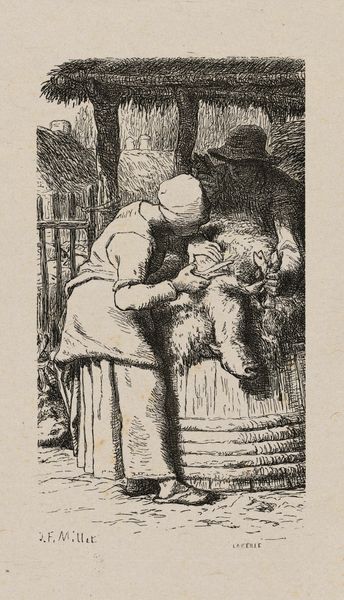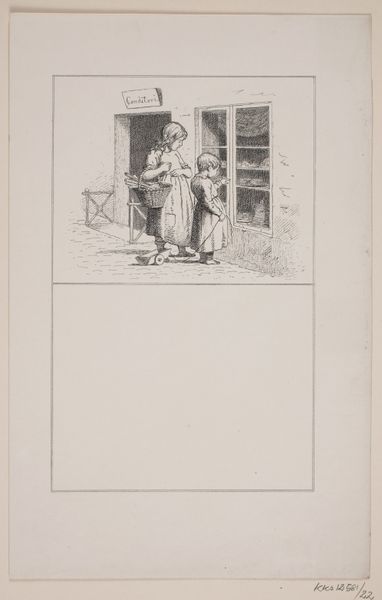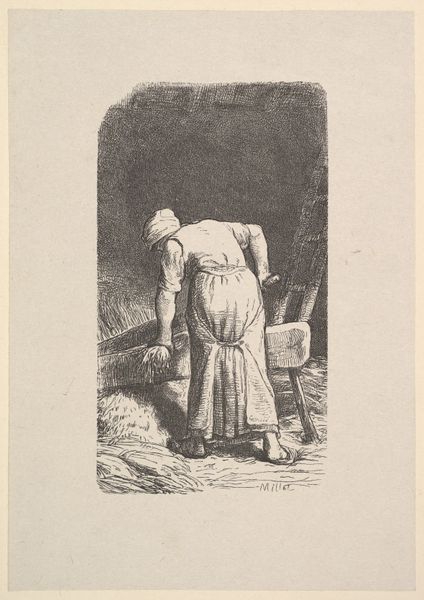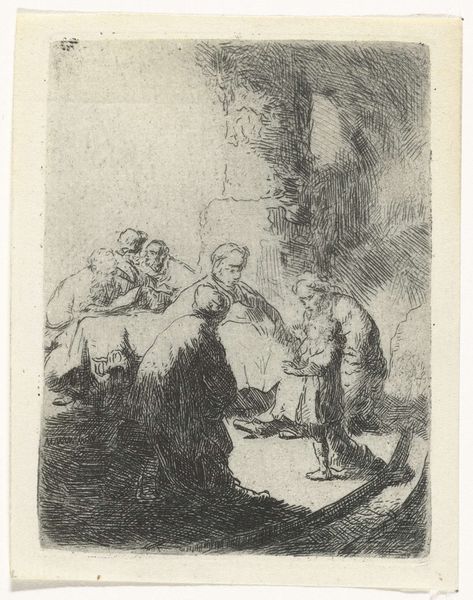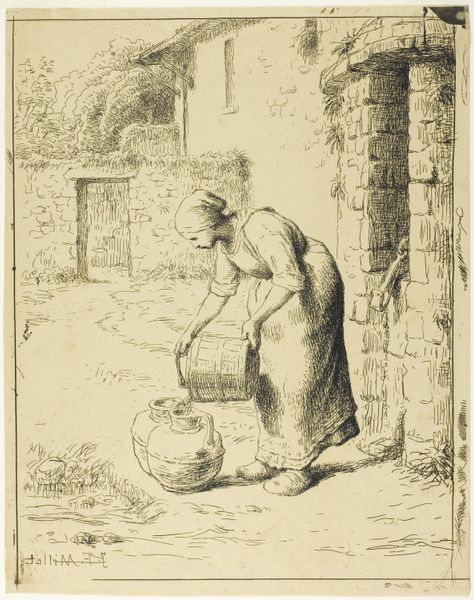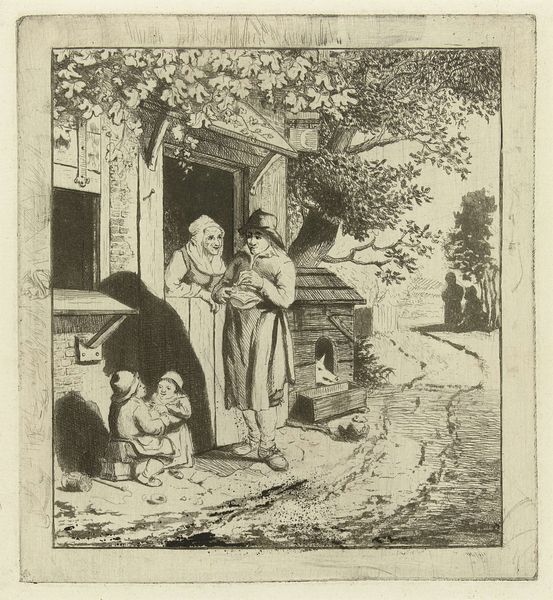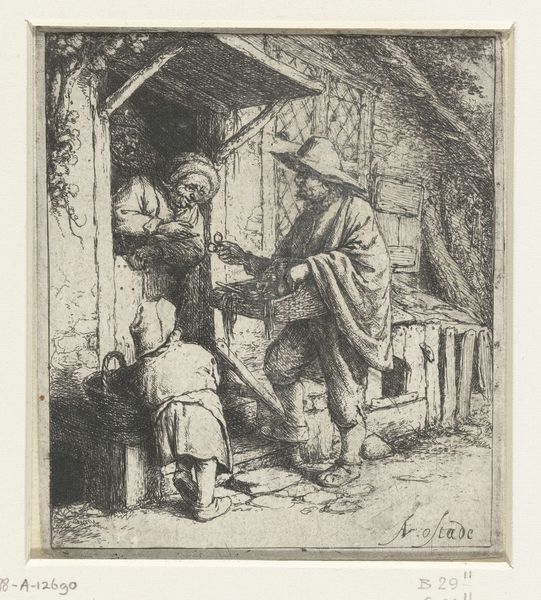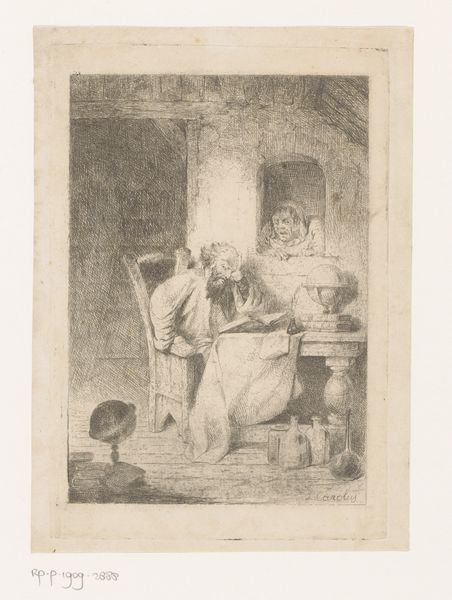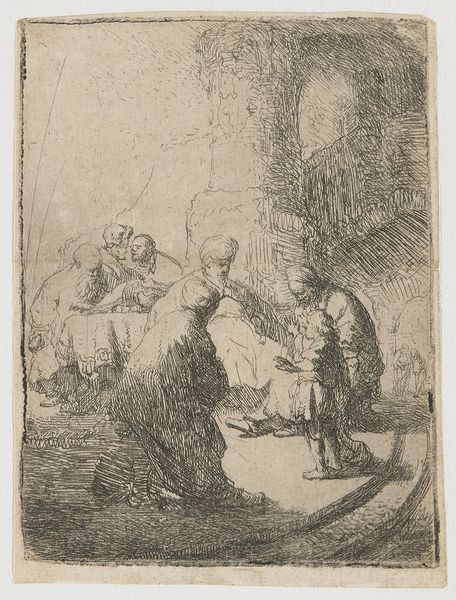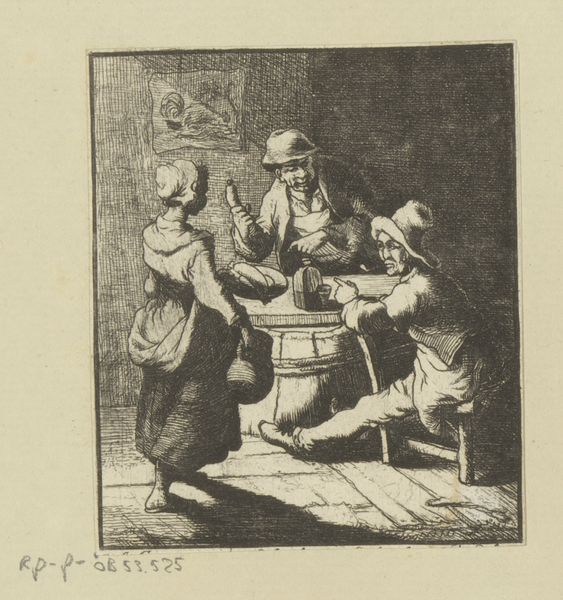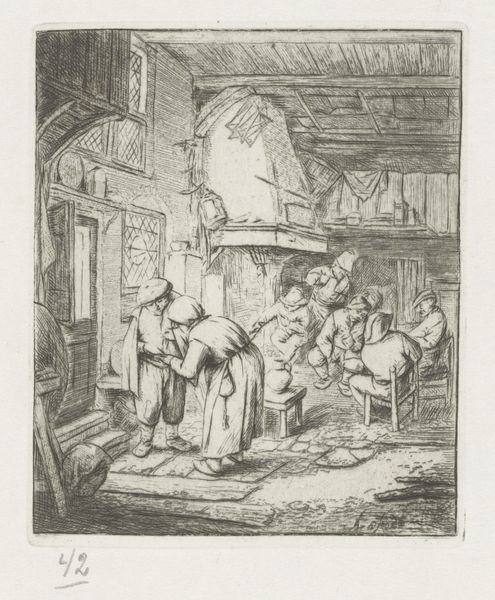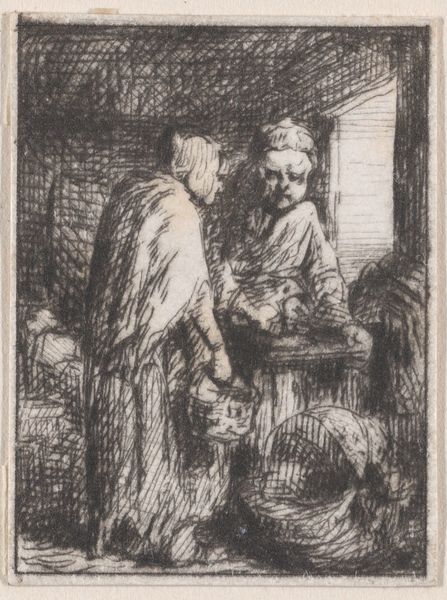
drawing, print, engraving
#
drawing
#
ink drawing
# print
#
landscape
#
genre-painting
#
history-painting
#
engraving
#
realism
Dimensions: block: 5 3/8 x 2 15/16 in. (13.6 x 7.4 cm)
Copyright: Public Domain
Curator: Up next we have "Sheepshearing," an engraving crafted by Jean-François Millet around 1855, now residing at the Metropolitan Museum of Art. What springs to mind for you initially? Editor: Stark, almost severe, in its monochromatic rendering. The sharp, decisive lines evoke a feeling of ruggedness, perhaps a glimpse into a hardscrabble rural existence. There's an emphasis on texture, the fleece particularly, that invites a closer look. Curator: Indeed, Millet’s work often sought to dignify the rural labor often overlooked by the Parisian art world. Sheepshearing wasn't just a picturesque activity; it was a crucial economic moment for farming families. Millet elevates it, imbuing it with significance through his artistic choices. Editor: Notice the composition. The figures are compressed into the frame, almost filling it entirely. This reinforces a sense of immediacy. And the lines directing us in circles from the shearing to the faces of the men at work. Is this all about texture? Not only. It directs us toward a central rhythm as we process the scene. Curator: That’s right. Millet wanted to celebrate that kind of circular structure to showcase the economic cycle in which those characters are involved. He created the space to represent them as active social protagonists. Editor: I’m curious, do you see any social critique embedded here? It feels... romanticized to a degree. Curator: Perhaps, but it also challenges the dominant narrative. Remember that realism arose amid increasing social tensions in France, and such artistic expressions began to question the norms. Millet doesn't shy away from showing labor; instead, he presents it as the backbone of society. Editor: So, in terms of decoding the social implications of the image through those workers, this piece can be thought as the beginning of it all. Interesting. Curator: Exactly. He presents working people not just as anonymous subjects, but as central to French identity, a subtle yet powerful act of defiance. I see in his choice a challenge for change. Editor: Well, considering its linear precision, I must admit that its texture is more eloquent now.
Comments
No comments
Be the first to comment and join the conversation on the ultimate creative platform.
